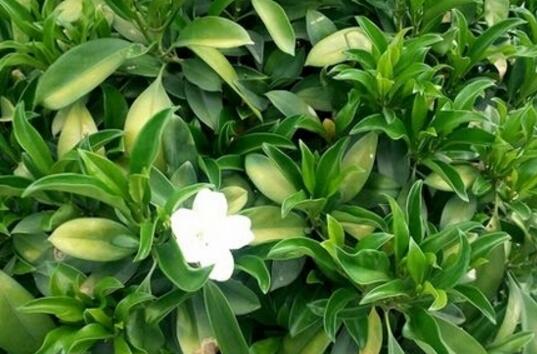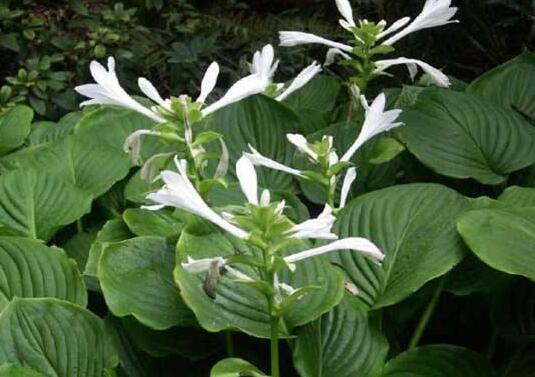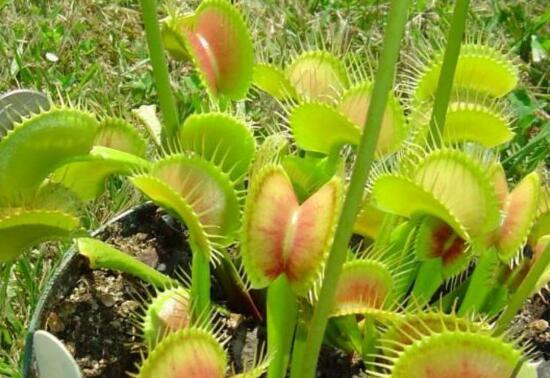African jasmine pest control, learn four ways to avoid yellowing leaves and plant atrophy
The health of plants is closely related to the environment and methods, and African jasmine is no exception, and the phenomenon of soft and sagging African jasmine leaves encountered by some flower friends can be related to diseases and insect pests. What should we do when we encounter diseases and insect pests? Today we will explain the prevention and control methods of African jasmine diseases and insect pests.
Prevention and control of African jasmine diseases and insect pests

I. what about African jasmine worms?
1. Short-forehead negative locust
Its damage peak is in autumn, the adult's body length is 21-25 mm, the body color is green or brown, and it will feed on the leaves of African jasmine. It is one of the most harmful pests in the prevention and control of African jasmine diseases and insect pests. It will cause holes and gaps in the leaves, which will affect the beauty very much.
Control methods: (1) even if withered leaves and weeds are removed in autumn and winter; (2) the solution of trichlorfon crystal with sandblasting concentration of 90% will kill the negative locust in time; ⑶ will strengthen the maintenance in the later stage.
2. Slugs
African jasmine has silver stripes on its leaves and white eggs at the base in summer. Slugs usually come out at night to feed on young leaves, and the insect source is hidden in the soil or at the base.
Prevention and control measures: (1) disinfect the basin soil before putting it on the pot, which can be exposed to the sun; (2) move the African jasmine to the sun, which can kill the slug in direct sunlight for more than 3 hours.
Second, common diseases
1. Anthrax
Features: African jasmine leaves first appear irregular disease spots, located at the edge of the leaves, the size is usually about 10 mm, the color of disease spots is generally grayish white, but will become dark brown, and black spots will appear in the middle of the disease spots.
Prevention and control measures: (1) pay attention to keep the environment ventilated and control the temperature below 32 degrees; (2) spray 50% carbendazim wettable powder 800 times, or 25% carbendazim wettable powder 500 times, once every 10 days, can improve the drug effect.
2. Leaf spot
Features: black-brown round spots appear on the front of African jasmine leaves, the disease spots will continue to spread, and appear irregular shape, there are multiple black spots on both sides of the leaves, the leaves are yellow and early fall, and the plant grows slowly.
Control methods: (1) stop spraying water on the leaves of the plant and remove the diseased leaves; (2) use 1000 times of 50% topiramate, 500 times of 70% mancozeb and 400-600 times of 80% mancozeb, which can be used alternately to avoid drug resistance.
Control methods of African jasmine diseases and insect pests
African jasmine evergreen vine with stems up to 4 meters long. African jasmine is easy to adapt to unfamiliar environment and can be planted in courtyards and balconies. African jasmine branches as emerald, leaves shiny, flowers slightly fragrant, elegant flowers, each five-petal, umbrella-shaped, clustered at the top of the flower branch. African jasmine does not usually have diseases and insect pests, but it happens occasionally. So, what are the common diseases and insect pests of African jasmine? What are the prevention and control methods of African jasmine diseases and insect pests?
Control methods of African jasmine diseases and insect pests
I. Control methods of African jasmine diseases
1. Anthracnose: mostly occurs on twigs and leaves, with nearly round to irregularly shaped sunken spots, brown edges, gray-white to grayish brown in the center, and sparse black grains on the upper side, as its conidial disk. Prevention and treatment: at the initial stage of the disease, 50% carbendazim wettable powder 800 times, 25% chlorothalonil wettable powder 800 times, or 25% carbendazim wettable powder 500 times, alternately sprayed every 10 days for 3 to 4 times.
two。 Sunburn: in the heat of summer, when the shade is not in place, the young shoots and young leaves of potted African jasmine are prone to sunburn, which is characterized by gray or light white burn spots on the leaves. Prevention and control methods: use shading net to shade and change position properly; in high temperature and dry season, appropriately increase watering times and amount of water, and if necessary, pour water on the leaf surface; for the burned plants, move them to the shade shed in time, cut off the burnt shoots and young leaves, strengthen water and fertilizer management, and make the plants return to health as soon as possible.
II. Prevention and control of jasmine pests in Africa
African jasmine occasionally occurs leaf-eating pests, such as short-forehead negative locusts, resulting in more holes or defects in the leaves of the plant. 90% trichlorfon crystal 800 times solution should be sprayed in time to kill it.
The above is the article on the prevention and control of jasmine diseases and insect pests in Africa. African jasmine likes warmth and good sunshine, but it needs to avoid the strong direct sunlight in summer, and it likes the environment with high humidity and good ventilation. African jasmine diseases and insect pests are generally easier to control, do not worry too much, as long as according to scientific methods to raise African jasmine, it can grow healthily.
African jasmine pest control African jasmine, formerly known as Grey, alias: carp bile, ash thorn wood, yellow fruit, small yellow fruit, Latin name: Fagraea ceilanica. Originating in southern China and Southeast Asia, Magnoliaceae is an evergreen (climbing) shrub or small tree, formerly known as Cinnamomum chinense (see Atlas of higher plants in China, Flora of Yunnan, etc.). It is similar to the jasmine of Melilidae only in that the leaves are opposite and the flowers are fragrant. Because the homonym of ash wood is similar to jasmine, and in order to make the name good and easy to sell, the florist gave it a new name "African jasmine". Distributed in southern China and Southeast Asia and other countries.
African jasmine is easy to adapt to unfamiliar environment and can be planted in courtyards and balconies. African jasmine branches as emerald, leaves shiny, flowers slightly fragrant, elegant flowers, each five-petal, umbrella-shaped, clustered at the top of the flower branch. The flowering period is very long, blooming in winter and summer, and blooming most brightly in spring and summer. Early in the morning or dusk, if there is no faint fragrance, refreshing. Disease and pest control 1. ① anthracnose mostly occurs on twigs and leaves, with nearly round to irregular sunken spots, brown edges, gray-white to grayish brown in the center, and sparse black grains on the top, which is its conidial disk. Prevention and treatment: at the initial stage of the disease, 50% carbendazim wettable powder 800 times, 25% chlorothalonil wettable powder 800 times, or 25% carbendazim wettable powder 500 times, alternately sprayed every 10 days for 3 to 4 times. ② sunburn disease in hot summer under the condition that the shade is not in place, the young shoots and young leaves of potted African jasmine are prone to sunburn, which is characterized by gray or light white burn spots on the leaves. Prevention and control methods: use shading net to shade and change position properly; in high temperature and dry season, appropriately increase watering times and amount of water, and if necessary, pour water on the leaf surface; for the burned plants, move them to the shade shed in time, cut off the burnt shoots and young leaves, strengthen water and fertilizer management, and make the plants return to health as soon as possible. 2. Pest African jasmine occasionally occurs leaf-eating pests, such as short-forehead negative locusts, resulting in more holes or defects in the leaves of the plant. 90% trichlorfon crystal 800 times solution should be sprayed in time to kill it.
- Prev

What to do with the growing insects of the flower of the jade hairpin, the pest control of the flower / 2 insect pests 2 diseases
In the process of cultivating jade hairpin flowers, people do not want to encounter such problems as diseases and insect pests, which not only have a great impact on the ornamental of jade hairpin flowers, but also lead to plant death if they are not treated for a long time. What about the jade hairpin flower worms? How to prevent and control the diseases and insect pests of hairpin flower
- Next

What about the long worms of flytrap, pest control of flytrap / leaf soft dehydration disease stop illuminating
When it comes to flytrap, we all know that it is a mosquito repellent plant, its clip can attract insects, and then kill them at once. But does everyone know? If the maintenance is improper, the flytrap that can eat insects will also grow worms, what should we do at this time? The following are several common diseases and insect pests of flytrap
Related
- Fuxing push coffee new agricultural production and marketing class: lack of small-scale processing plants
- Jujube rice field leisure farm deep ploughing Yilan for five years to create a space for organic food and play
- Nongyu Farm-A trial of organic papaya for brave women with advanced technology
- Four points for attention in the prevention and control of diseases and insect pests of edible fungi
- How to add nutrient solution to Edible Fungi
- Is there any good way to control edible fungus mites?
- Open Inoculation Technology of Edible Fungi
- Is there any clever way to use fertilizer for edible fungus in winter?
- What agents are used to kill the pathogens of edible fungi in the mushroom shed?
- Rapid drying of Edible Fungi

